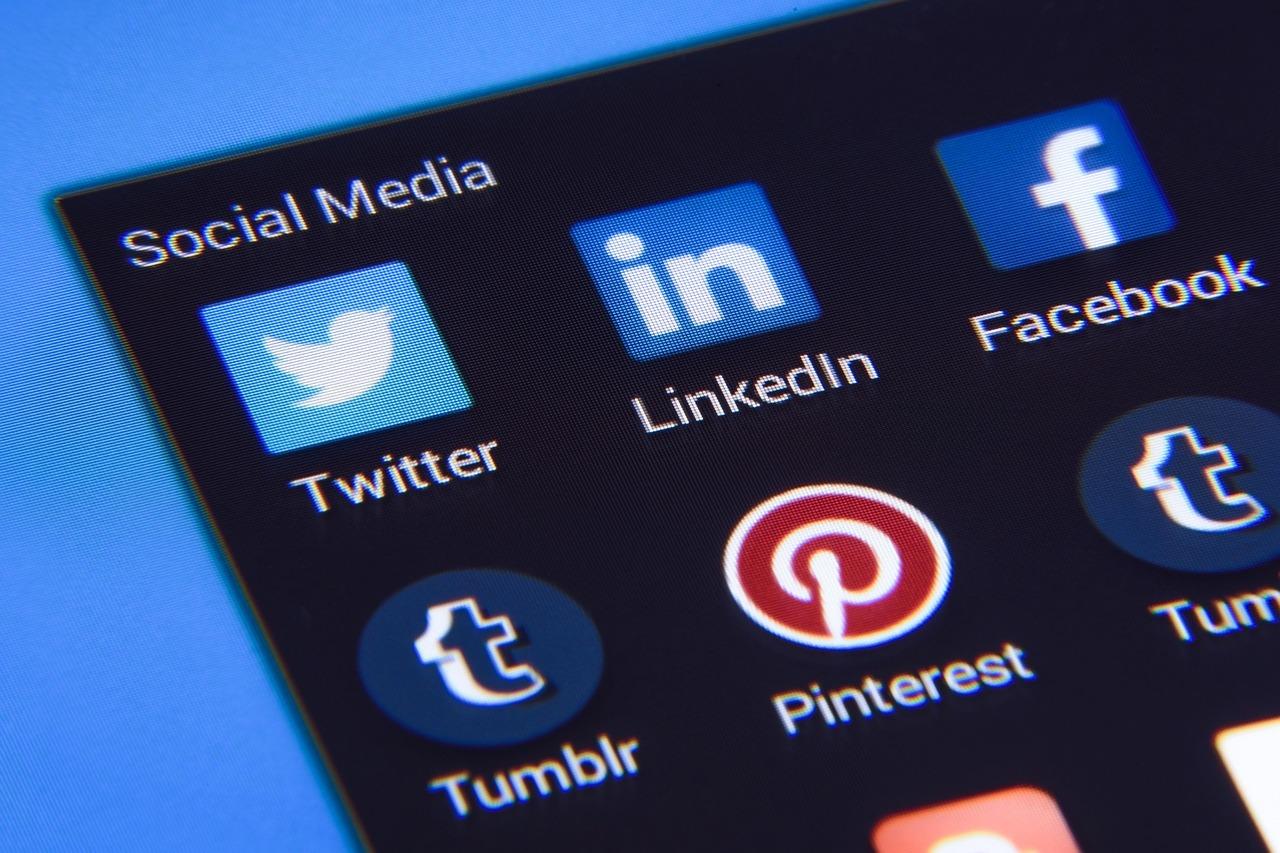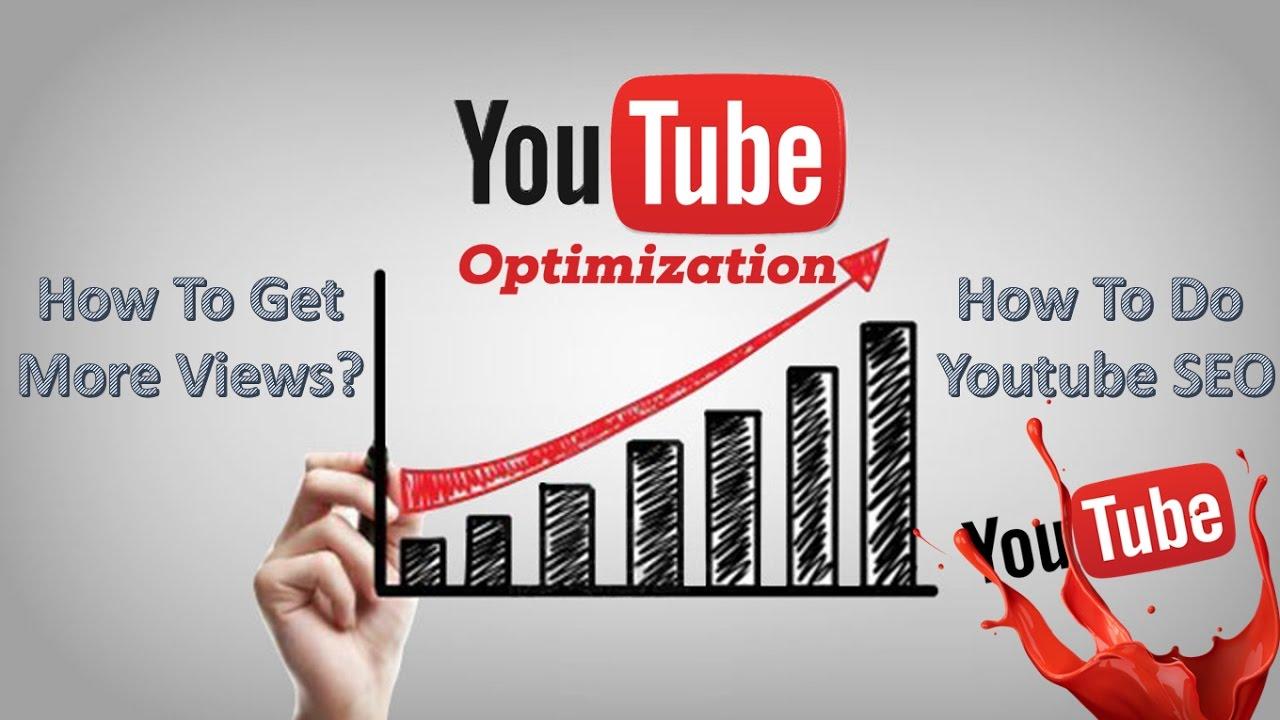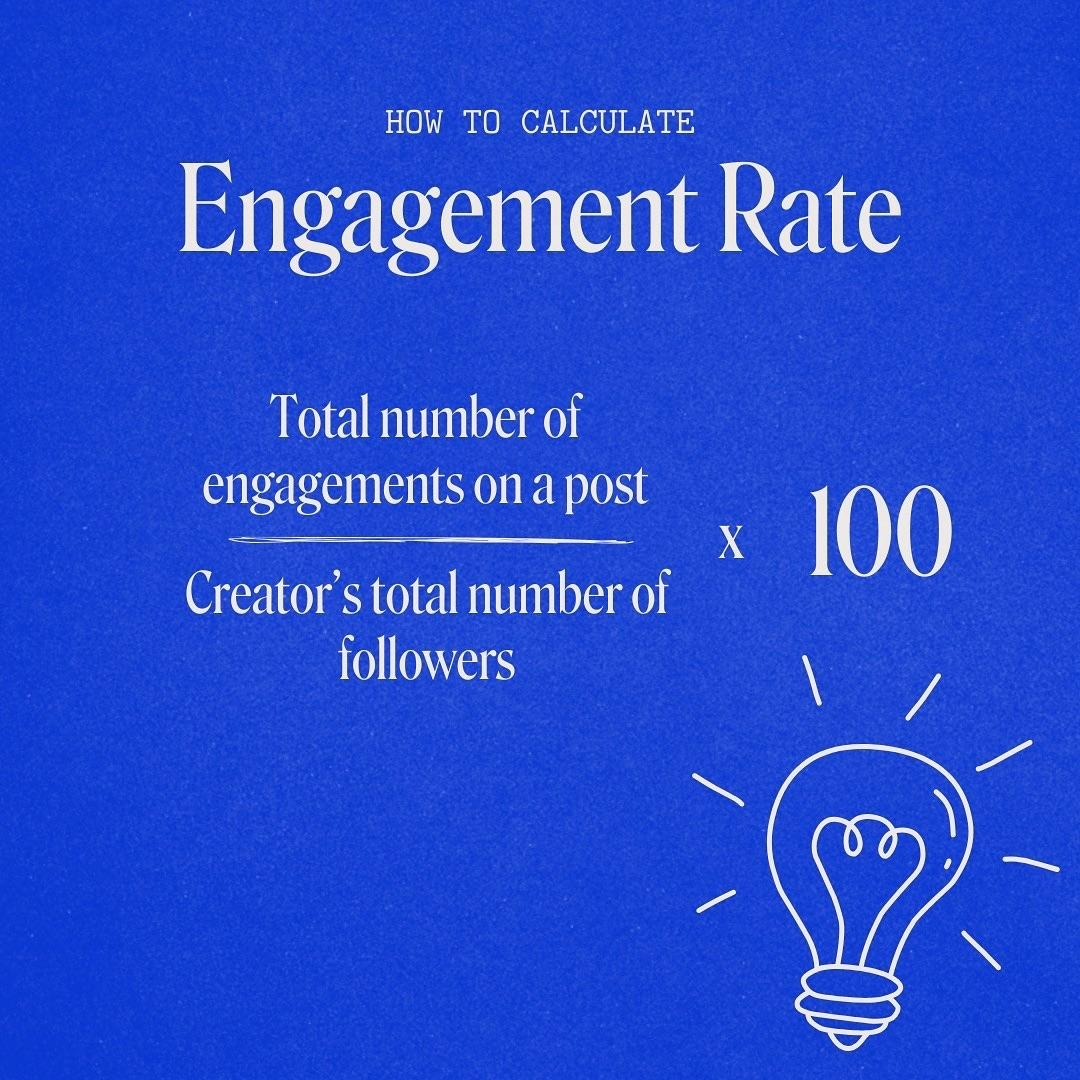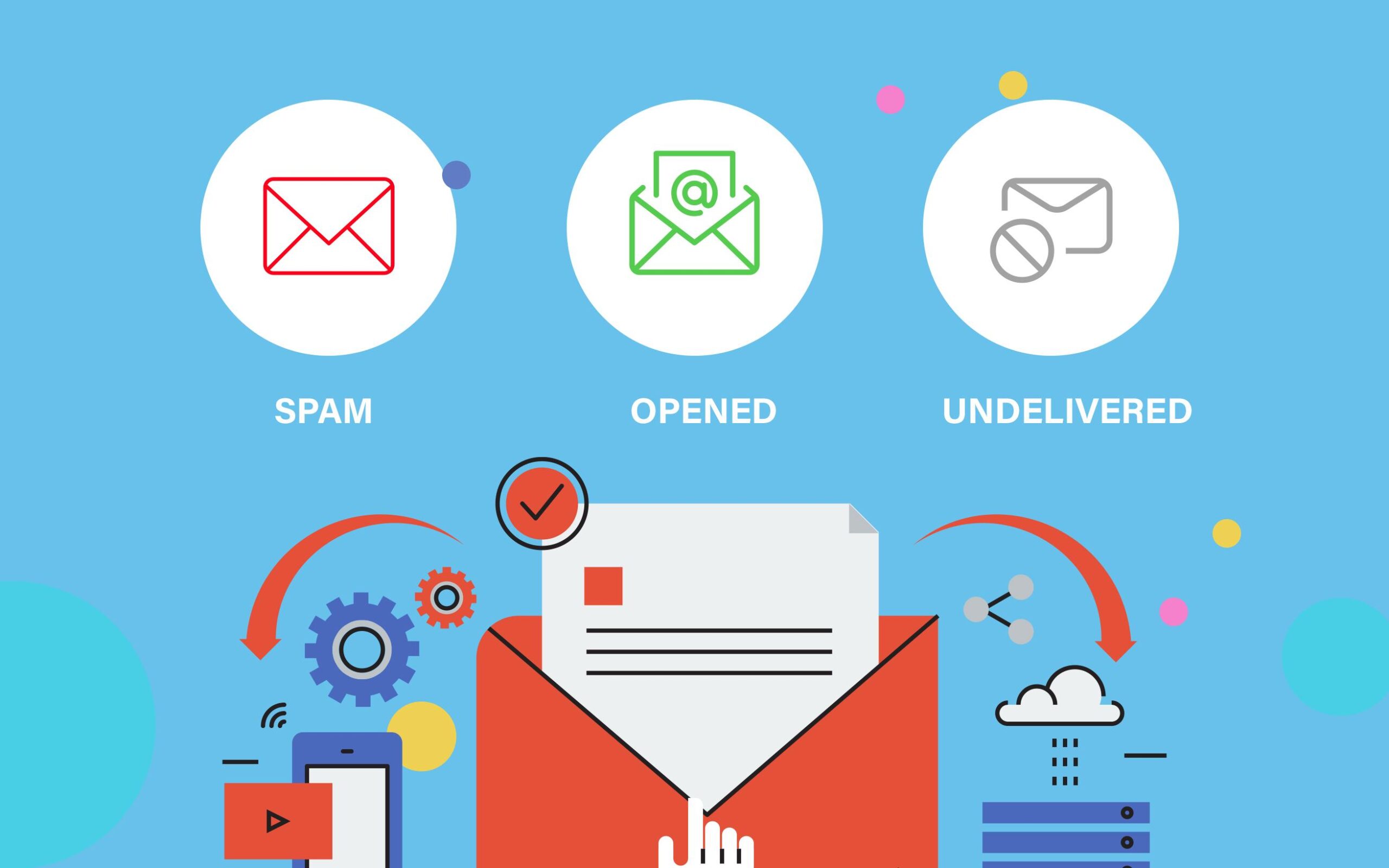
Email List Cleaning: Your 5-Step Guide to Boost Deliverability
Hey there, email marketers! We all know that building a robust email list is just the beginning of our journey. But what happens when that list becomes cluttered with inactive subscribers and bounced addresses? If you’ve ever found yourself frustrated with low open rates or dreaded spam complaints, you’re not alone. That’s where email list cleaning comes into play—a crucial step that can transform your email marketing game!
In this complete 5-step guide, we’ll walk you through the ins and outs of email list cleaning. By the end, you’ll not only understand why keeping your list pristine is essential but also how to effectively rejuvenate your subscriber base. Get ready to enhance your deliverability, engage your audience, and watch your campaigns soar! Let’s dive in and clean up that list for good!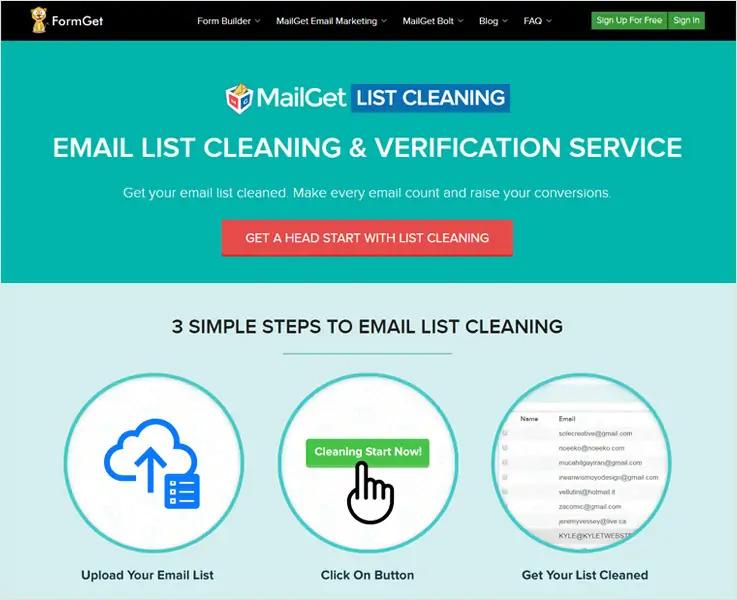
Understanding the Importance of Email List Cleaning
Keeping your email list clean is crucial for maximizing your email marketing efforts. An up-to-date and well-maintained list ensures that your messages reach the right audience, improving overall engagement and conversion rates. When you neglect to clean your list regularly, you risk harming your sender reputation, which can lead to your emails being marked as spam or, worse, getting blocked altogether.
One of the primary reasons to prioritize list cleaning is to boost your email deliverability. When you send emails to invalid or inactive addresses, it can lead to higher bounce rates. High bounce rates signal to email service providers (ESPs) that your content is less reputable, which can negatively impact your sender score. A poor sender score can result in your emails being filtered out, reducing the chances of reaching your target audience.
Moreover, maintaining a clean email list helps you save costs. Many email marketing platforms charge based on the number of subscribers you have. If your list contains a significant number of inactive or invalid addresses, you are essentially paying for users who aren’t engaging with your content. By regularly cleaning your list, you can ensure that you are only paying for active subscribers who are genuinely interested in your offerings.
Another significant aspect of list cleaning is improving engagement metrics. When you send emails to an audience that is genuinely interested, you can expect higher open rates, click-through rates, and overall engagement. Engaged subscribers are more likely to convert, giving you better returns on your marketing investment. Strong engagement also sends positive signals to ESPs that your email campaigns are valued by recipients, further enhancing your deliverability.
To effectively clean your email list, consider implementing the following strategies:
- Regularly Remove Bounces: Identify and remove hard bounces immediately after your campaigns.
- Archive Inactive Subscribers: If a subscriber hasn’t engaged with your emails in a specific timeframe, consider moving them to an archived list.
- Use Double Opt-In: Encourage new subscribers to confirm their email addresses to ensure validity.
- Monitor Engagement: Keep track of open and click rates and tailor your list cleaning efforts accordingly.
Here’s a simple table to illustrate the benefits of a clean email list:
| Benefit | Description |
|---|---|
| Higher Deliverability | Ensures your emails reach the inbox instead of the spam folder. |
| Cost Efficiency | Pays only for active subscribers, reducing unnecessary expenses. |
| Improved Engagement | Boosts open and click rates by targeting interested recipients. |
| Enhanced Sender Reputation | Maintains a good sender score, resulting in better email performance. |
understanding and implementing email list cleaning is not just a best practice; it’s essential for anyone looking to succeed in email marketing. By taking the time to regularly maintain your list, you’re investing in the effectiveness of your campaigns and ensuring that your messages are not only delivered but also welcomed by your audience.
Signs That Your Email List Needs a Refresh
Keeping your email list fresh is crucial for maintaining high engagement rates and ensuring effective communication with your audience. If you notice any of the following signs, it might be time to consider a refresh:
- High Bounce Rates: If you consistently experience high bounce rates, it indicates that your list includes invalid email addresses. This not only affects your deliverability but could also harm your sender reputation.
- Declining Open Rates: Are your open rates dropping? A decrease could suggest that your subscribers are no longer interested in your content or that your emails are landing in spam folders.
- Increased Unsubscribes: An uptick in unsubscribe requests is a clear sign that your content is not resonating with your audience. Regularly monitoring this metric can help you identify issues quickly.
- Lack of Engagement: If you notice that subscribers are not clicking on your links or engaging with your content, it might be time to re-evaluate what you’re offering. Check your analytics to identify trends over time.
- Old Subscribers: Subscribers who haven’t interacted with your emails in over six months may need to be removed or re-engaged. Consider sending a targeted campaign to win back their interest before cleaning your list.
Additionally, it’s wise to track the performance of new subscribers. If you acquire a significant number of new emails but they show similar signs of disengagement, you may need to question your opt-in methods or the value you’re providing.
Here’s a quick reference table to help you assess the health of your email list:
| Metric | Ideal Range | Action Needed |
|---|---|---|
| Bounce Rate | Below 2% | Clean invalid emails |
| Open Rate | 15% – 25% | Revise subject lines/content |
| Unsubscribe Rate | Below 0.5% | Evaluate engagement tactics |
| Engagement Rate | Above 5% | Enhance content quality |
By paying close attention to these signs and metrics, you can take proactive steps to ensure your email list remains a valuable asset for your business. Remember, a clean list not only boosts deliverability but also fosters better relationships with your audience.
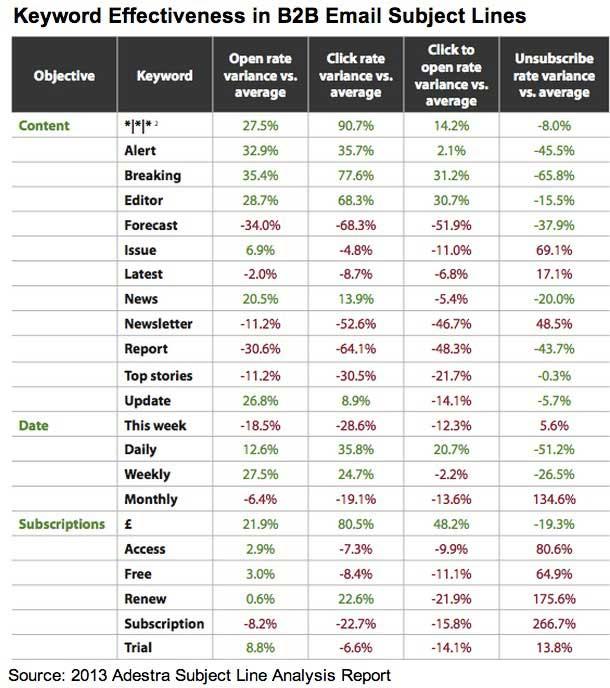
The First Step: Analyzing Your Current Email List
Understanding the current state of your email list is crucial before diving into any cleaning activities. A thorough analysis allows you to identify issues that can hinder your email deliverability and engagement rates. Start by gathering key metrics and insights about your subscribers.
Begin your analysis by examining the following:
- Open Rates: Look at how many recipients are opening your emails. Low open rates could indicate that your content isn’t resonating or that your emails are landing in spam folders.
- Click-Through Rates (CTR): This metric reveals how engaging your content is. A low CTR might suggest that your calls to action need to be more compelling.
- Unsubscribe Rates: Track how many subscribers are opting out of your emails. An uptick in this number can signal dissatisfaction or irrelevant content.
- Bounce Rates: Identify hard bounces (invalid email addresses) and soft bounces (temporary delivery issues). High bounce rates can severely affect your sender reputation.
Next, categorize your subscribers based on activity levels. This segmentation includes:
- Active Subscribers: Those who regularly engage with your content.
- Inactive Subscribers: Recipients who haven’t opened or clicked your emails in the last six months or more.
- New Subscribers: Recently added contacts who may still be exploring your brand.
Once you have this information, consider creating a simple table to visualize your findings:
| Subscriber Type | Count | Action Required |
|---|---|---|
| Active Subscribers | 500 | Continue engaging |
| Inactive Subscribers | 200 | Send re-engagement campaigns |
| New Subscribers | 300 | Onboarding emails |
After segmenting your list, identify patterns. Are there specific campaigns that generated spikes in engagement? Or perhaps certain content topics that consistently draw clicks? Use this information to refine your future email strategies, tailoring your content to meet subscriber interests.
don’t overlook the importance of data hygiene. Regularly deleting invalid email addresses and removing unsubscribed users from your list is essential for maintaining a healthy email marketing strategy. This will not only improve your deliverability rates but also enhance your overall campaign performance.
Identifying Inactive Subscribers and Why They Matter
Identifying inactive subscribers is a crucial step in maintaining a healthy email list. These are individuals who, for one reason or another, have stopped engaging with your content. Recognizing them is essential to not only improve your email deliverability but also to enhance your overall marketing strategy.
Why do inactive subscribers matter? Here are a few key reasons:
- Impact on Deliverability: When a significant portion of your list is inactive, it can negatively affect your sender reputation. ISPs track engagement metrics such as open rates and click-through rates. If these metrics decline due to inactivity, your emails may end up in spam folders.
- Wasted Resources: Email marketing campaigns typically incur costs based on your subscriber count. Continuing to pay for inactive subscribers means you’re spending money on an audience that isn’t benefiting your business.
- Skewed Analytics: A list filled with inactive subscribers can distort your analytics. This makes it difficult to gauge the true effectiveness of your campaigns and understand your active audience’s behavior.
To effectively identify those inactive subscribers, consider implementing these strategies:
- Engagement Metrics: Monitor open rates, click rates, and conversion rates over time. A subscriber who hasn’t opened your emails in the last six months is a strong candidate for re-evaluation.
- Send Re-Engagement Campaigns: Use targeted campaigns aimed at re-engaging inactive subscribers. Offer them incentives, such as discount codes or exclusive content, to win them back.
- Feedback Surveys: Ask for feedback from inactive subscribers to understand their reasons for disengagement. This can provide invaluable insights for refining your email marketing strategy.
Once you’ve identified your inactive subscribers, you can decide whether to attempt re-engagement or to remove them from your list entirely. Here’s a simple table to help you categorize subscribers based on their engagement levels:
| Engagement Level | Criteria | Next Steps |
|---|---|---|
| Highly Engaged | Opened emails in the last month | Continue regular communication |
| Moderately Engaged | Opened emails in the last 1-3 months | Send targeted content and offers |
| Inactive | No opens in the last 3-6 months | Send re-engagement campaigns |
| Unsubscribed | Clicked ‘unsubscribe’ | Remove from the list |
By actively managing your email list and identifying inactive subscribers, you not only enhance your deliverability rates but also ensure that your marketing efforts are directed toward an audience that genuinely values your content. This ultimately leads to a more effective and efficient email marketing strategy.

Setting Up a Re-engagement Campaign to Win Back Subscribers
Once you’ve identified the subscribers who are not engaging with your emails, it’s time to craft a compelling re-engagement campaign. The goal here is to reignite their interest and encourage them to interact with your brand again. To achieve this, consider the following strategies:
- Craft an Attention-Grabbing Subject Line: This is your first chance to make an impression. Use curiosity or value-driven language to entice them to open the email.
- Personalize Your Message: Use their name or reference their past interactions. A personal touch can make all the difference.
- Highlight Benefits: Remind them of what they’re missing out on. Whether it’s exclusive content, discounts, or updates, make it clear why they should stay engaged.
- Incorporate a Clear Call to Action: Be explicit about what you want them to do next. Whether it’s to click a link, update their preferences, or simply reply, make it easy for them to engage.
- Test and Optimize: A/B test different subject lines, copy variations, and CTAs to see what resonates best with your audience.
Consider segmenting your audience for more tailored messages. By dividing subscribers based on their previous interactions, you can create more relevant content that speaks directly to their interests and behaviors. This segmentation can significantly improve your open and click-through rates.
In addition to the standard email content, think about integrating engaging visuals or interactive elements, like polls or surveys. This not only makes your emails visually appealing but also encourages subscribers to interact directly with your content.
It’s also important to set a timeline for your re-engagement efforts. Typically, you should send a series of emails over a few weeks. Here’s a simple schedule you might follow:
| Email Number | Focus | Timing |
|---|---|---|
| 1 | Welcome Back Offer | Week 1 |
| 2 | Feedback Request | Week 2 |
| 3 | Final Reminder | Week 3 |
don’t shy away from offering an incentive to re-engage. Special discounts, exclusive access to content, or even a small giveaway can motivate subscribers who might be on the fence about staying subscribed. Remember, it’s all about making them feel valued and appreciated.
Removing Invalid Email Addresses: Tools and Techniques
Cleaning your email list is essential for maintaining high deliverability rates, and part of that process involves removing invalid email addresses. Using the right tools and techniques can streamline this task significantly, ensuring your campaigns reach the intended inboxes.
First off, consider utilizing email verification services. These platforms can help you identify invalid, disposable, or temporary email addresses. Some popular options include:
- NeverBounce – Provides real-time verification and a high accuracy rate.
- ZeroBounce – Offers detailed reporting, including reasons for invalid emails.
- Hunter.io - Ideal for finding and verifying business emails quickly.
In addition to verification services, you can leverage list cleaning software that integrates with your existing email marketing tools. These software solutions often allow you to perform bulk actions, thus saving time. Notable tools include:
- Mailgun – Offers a variety of APIs for email validation.
- DataValidation – Specializes in comprehensive email list cleaning.
- Clearout – Offers features to clean and validate in real-time.
For those who prefer a more hands-on approach, utilizing CSV files to track invalid emails can be effective. By exporting your email list to a spreadsheet and using functions to filter out bad addresses, you can manually review and clean your list. Here’s a simple method to identify invalid entries:
| Email Address | Validation Status |
|---|---|
| [email protected] | Valid |
| [email protected] | Invalid |
| [email protected] | Valid |
Lastly, don’t underestimate the power of regular maintenance. Setting a schedule for periodic list cleaning can prevent the accumulation of invalid addresses. Frequent engagement with your list through re-confirmation emails can also ensure that your contacts remain valid and interested. By employing these tools and techniques, you can significantly enhance your email deliverability and engagement rates.
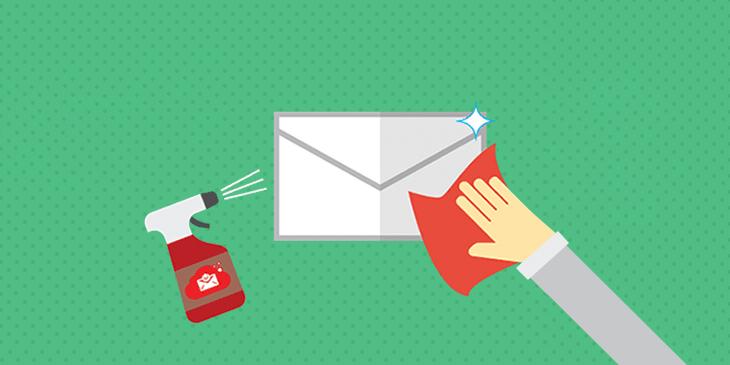
Keeping Your List Clean with Regular Maintenance
Keeping your email list in top shape requires regular attention and proactive strategies. Just as a garden needs weeding to flourish, your email list needs cleaning to ensure healthy engagement and optimal deliverability. Here are some effective strategies you can implement to maintain a pristine list:
- Regularly Remove Inactive Subscribers: Analyze engagement data to identify subscribers who haven’t opened your emails in a while. Consider removing or re-engaging these contacts to ensure your list reflects interested recipients.
- Implement Double Opt-In: This method confirms subscriber intent. By requiring users to verify their email addresses, you reduce the chances of fake or mistyped entries, enhancing the quality of your list.
- Monitor Bounce Rates: If emails frequently bounce back, it’s a clear sign that your list needs attention. Remove hard bounces immediately and re-assess soft bounces after a few attempts.
- Encourage Update of Preferences: Give subscribers the option to update their information or preferences easily. This can help keep your list accurate and allow you to segment your audience better.
Creating a routine for these tasks can save you time and improve your email marketing efforts significantly. You might even want to schedule a regular “cleaning day” on your calendar. Here’s a simple table to help you organize your cleaning efforts:
| Task | Frequency | Notes |
|---|---|---|
| Remove Inactive Subscribers | Monthly | Target users who haven’t engaged in the last 6 months |
| Check Bounce Rates | Weekly | Focus on hard bounces immediately |
| Preference Update Campaigns | Quarterly | Encourage users to update their interests |
| Audit New Sign-Ups | Bi-weekly | Ensure double opt-in is working effectively |
Another effective approach is to segment your list based on engagement levels. By doing so, you can tailor your messaging and offers to different groups, ultimately leading to better results. This personalized approach can tremendously boost your open and click-through rates.
don’t forget to continuously educate yourself on best practices. The world of email marketing is always evolving, and staying updated with the latest trends and techniques will help you keep your list squeaky clean and highly effective.
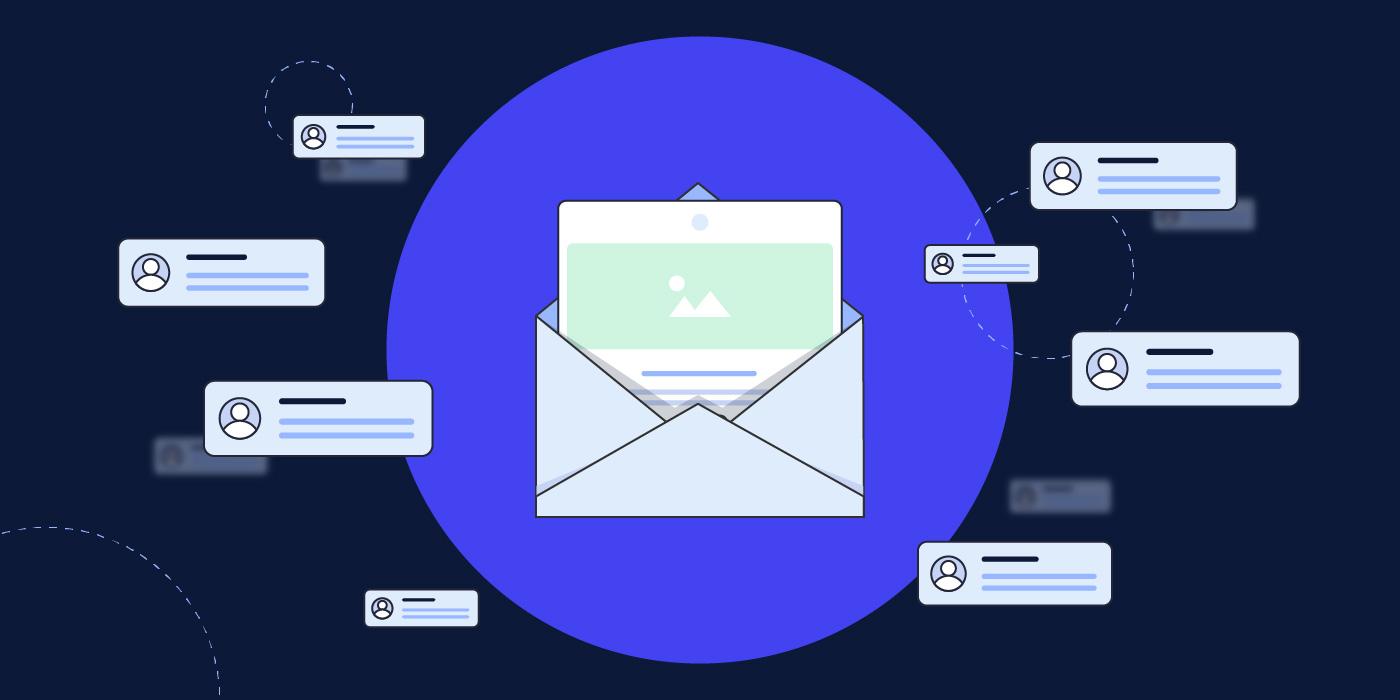
Best Practices for Adding New Subscribers to Your List
Growing your email list is essential for reaching a wider audience and driving engagement, but it’s crucial to do it the right way. Here are some best practices to ensure that every new subscriber you add is genuinely interested and engaged with your content.
- Offer Value Upfront: Attract new subscribers by providing something valuable in exchange for their email addresses. This could be a free ebook, a discount code, or exclusive access to content. Make sure the offer aligns with your brand and speaks to your target audience.
- Use Double Opt-In: This method not only confirms the subscriber’s intent but also ensures that you have a clean list right from the start. It may seem like an extra step, but it dramatically reduces the chances of spam complaints and improves overall engagement.
- Segment Your List: As you add new subscribers, think about how you can segment them based on interests, demographics, or behaviors. This allows for more tailored content, which can significantly boost engagement rates.
- Keep Your Signup Forms Simple: A lengthy form can deter potential subscribers. Aim for a straightforward design that requires only essential information, such as the email address and perhaps a first name.
Monitoring the performance of your subscriber acquisition tactics is just as important as how you add them. Regularly check engagement metrics like open rates and click-through rates. This will help you determine which methods attract the most interested subscribers and which may need adjustment.
| Acquisition Method | Engagement Level |
|---|---|
| Incentives (Ebooks, Discounts) | High |
| Social Media Promotions | Medium |
| Website Signup Forms | High |
| Referral Programs | High |
Additionally, consider using social proof to encourage signups. Display testimonials, subscriber counts, or endorsements prominently on your signup forms. When potential subscribers see that others trust your brand and find value in your content, they are more likely to join your list.
always respect your subscribers’ preferences. Clearly communicate what type of content they can expect and how often they will receive emails. This transparency builds trust and encourages long-term relationships with your audience, leading to better retention and engagement.

Leveraging Automation for Ongoing List Cleaning
In today’s fast-paced digital landscape, maintaining a pristine email list is essential for maximizing your marketing efforts. Automation can be a game changer in this regard, simplifying the ongoing process of list cleaning while ensuring that your audience remains engaged and receptive. By leveraging automation, you can not only save time but also enhance the accuracy and effectiveness of your email marketing campaigns.
One of the most effective ways to automate list cleaning is through the integration of email verification tools. These tools can instantly validate email addresses at the point of entry, reducing the number of invalid or disposable emails that clutter your list. By implementing such systems, you can:
- Minimize bounce rates
- Improve sender reputation
- Enhance overall deliverability rates
Additionally, setting up automated workflows can help identify and segment inactive subscribers. For example, you can create a series of follow-up emails targeting users who haven’t engaged with your messages over a specific period. This approach not only allows you to re-engage these users with tailored content but also helps you systematically remove those who remain unresponsive after multiple attempts.
Consider utilizing automated drip campaigns that nurture your audience based on their interactions. By analyzing user behavior, you can automatically assign them to different segments and send personalized content that speaks directly to their interests. This not only keeps your list clean by encouraging engagement but also fosters a stronger connection with your audience.
| Email List Management Automation | Benefits |
|---|---|
| Email Verification | Reduces invalid addresses |
| Engagement Tracking | Identifies inactive subscribers |
| Segmentation Automation | Delivers personalized content |
| Drip Campaigns | Enhances engagement and retention |
Moreover, automating the unsubscribe process is vital for maintaining a healthy list. By providing an easy way for users to opt-out, you can ensure that your list remains focused on those genuinely interested in your offerings. This not only respects your subscribers’ preferences but also helps to keep your engagement metrics high.
don’t forget about data hygiene. Schedule regular audits of your email list to review engagement metrics and remove outdated contacts. Integrating this process into your marketing automation platform can help streamline these audits, making it easier to maintain an updated and engaged email list.
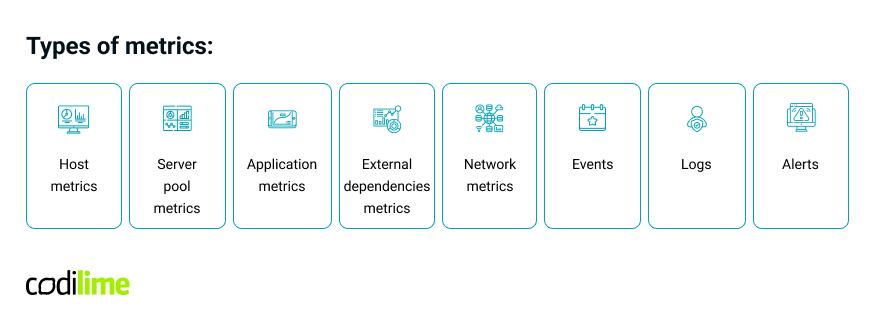
Monitoring Metrics to Measure Your Deliverability Success
When it comes to email marketing, success isn’t just about sending emails; it’s about ensuring they actually reach your recipients’ inboxes. To achieve this, monitoring specific metrics is paramount. This way, you can fine-tune your strategies and ensure that your email campaigns are hitting the mark.
Here are some key metrics you should be tracking:
- Open Rate: This tells you the percentage of recipients who open your emails. A higher open rate indicates effective subject lines and a list that’s engaged with your content.
- Click-Through Rate (CTR): Measure how many recipients clicked on links within your emails. This metric helps you gauge how compelling your content is.
- Bounce Rate: Keep an eye on both hard bounces (permanent delivery failures) and soft bounces (temporary issues). A high bounce rate can severely affect your sender reputation.
- Unsubscribe Rate: If users are opting out after you send them emails, it might be time to reassess your targeting or content strategy.
- Spam Complaint Rate: This indicates how many recipients marked your emails as spam. Keeping this rate low is crucial for deliverability.
To put these metrics into perspective, consider the following table that outlines optimal benchmarks for a successful email campaign:
| Metric | Optimal Benchmark |
|---|---|
| Open Rate | 20% – 30% |
| Click-Through Rate | 2% – 5% |
| Bounce Rate | 0% – 2% |
| Unsubscribe Rate | 0% – 1% |
| Spam Complaint Rate | 0% – 0.1% |
Monitoring these metrics will not only help you identify areas for improvement but also enhance your overall deliverability rates. By paying close attention to your metrics, you can make data-driven decisions that will resonate with your audience. Remember, consistent analysis and adjustments are the keys to maintaining a healthy email list.
Don’t forget that external factors can influence these metrics as well. For example, changes in email service provider algorithms or seasonal trends can impact how your emails perform. Stay agile and ready to adapt your strategies accordingly to ensure that your email deliverability remains strong.

The Long-Term Benefits of a Clean Email List
Maintaining a clean email list is not just a matter of aesthetics; it’s a strategic move that pays dividends over time. A tidy list enhances your ability to reach the right audience, ensuring that your messages land in inboxes rather than spam folders. This leads to improved engagement and ultimately, higher conversion rates.
One of the most significant long-term benefits is increased deliverability rates. When you consistently remove invalid or unengaged subscribers, your sender reputation improves. Internet Service Providers (ISPs) notice your higher engagement metrics, allowing your emails to bypass spam filters and reach more inboxes. This consistent delivery builds trust with your subscribers and helps establish a loyal customer base.
Additionally, a clean email list translates into better analytics and insights. With fewer distractions from unengaged or invalid addresses, you can track metrics like open rates and click-through rates more accurately. This clarity enables you to understand your audience better, allowing for tailored content that resonates with your readers. As a result, you can refine your marketing strategies to target your campaigns more effectively.
Moreover, a well-maintained list fosters stronger relationships with your subscribers. When you focus on engaging with individuals who genuinely want to hear from you, your communication becomes more meaningful. Subscribers appreciate relevant content and are more likely to interact with your emails, creating a cycle of positivity that enhances brand loyalty.
To illustrate the benefits further, consider the following table comparing the outcomes of a clean versus a dirty email list:
| Metric | Clean Email List | Dirty Email List |
|---|---|---|
| Deliverability Rate | 95% | 70% |
| Open Rate | 30% | 10% |
| Click-Through Rate | 5% | 1% |
| Unsubscribe Rate | 0.5% | 5% |
Investing time and resources in maintaining a clean list also contributes to cost efficiency. Many email marketing platforms charge based on the number of subscribers. When your list is cluttered with inactive or irrelevant emails, you’re essentially wasting money on contacts that don’t engage with your content. Cleaning your email list regularly ensures that you only pay for engaged subscribers, optimizing your return on investment.
Lastly, a clean email list positions your brand as a trusted authority in your industry. Subscribers are more likely to perceive your messages as valuable when they know you only reach out to those who are interested. This not only enhances your reputation but also encourages word-of-mouth referrals, further expanding your reach.

How to Encourage Engagement and Reduce Unsubscribes
Engaging your subscribers is crucial for maintaining a healthy email list and reducing the likelihood of unsubscribes. Here are some effective strategies to foster interaction and keep your audience excited about your emails:
- Personalization: Tailor your content to resonate with individual preferences. Use their names and segment your audience based on their past interactions. A personalized email feels more relevant and can significantly increase open rates.
- Valuable Content: Always provide content that adds value. Whether it’s informative articles, exclusive discounts, or helpful tips, ensuring your emails serve a purpose will keep your subscribers looking forward to your next message.
- Engaging Subject Lines: Craft compelling subject lines that spark curiosity. A great subject line can make the difference between your email being opened or ignored. Experiment with different styles and tones to see what resonates best with your audience.
- Clear Call-to-Action: Ensure your emails have a clear and enticing call-to-action (CTA). Whether it’s to read a blog post, participate in a survey, or take advantage of a promotion, a strong CTA encourages your readers to engage further.
Tracking engagement metrics is also vital. Keep an eye on open rates, click-through rates, and unsubscribe rates to gauge how your audience is responding. If you notice a dip in engagement, it might be time to reassess your content strategy.
Offering incentives can be an effective way to boost engagement. Consider implementing:
| Incentive | Description |
|---|---|
| Exclusive Discounts | Offer special discounts to subscribers as a reward for their loyalty. |
| Free Resources | Provide free eBooks or guides that are relevant to your audience’s interests. |
| Contests and Giveaways | Encourage participation by hosting contests or giveaways that require engagement. |
Another important aspect is to maintain a regular email schedule. Consistency builds familiarity and trust with your audience. However, it’s also essential to avoid overwhelming your subscribers with too many emails. Find a balance that works for your brand and audience.
encourage feedback. Create opportunities for your subscribers to share their thoughts and suggestions. Incorporate surveys or simple questions in your emails to get insights into what your audience truly values. This not only helps you improve but also fosters a sense of community.
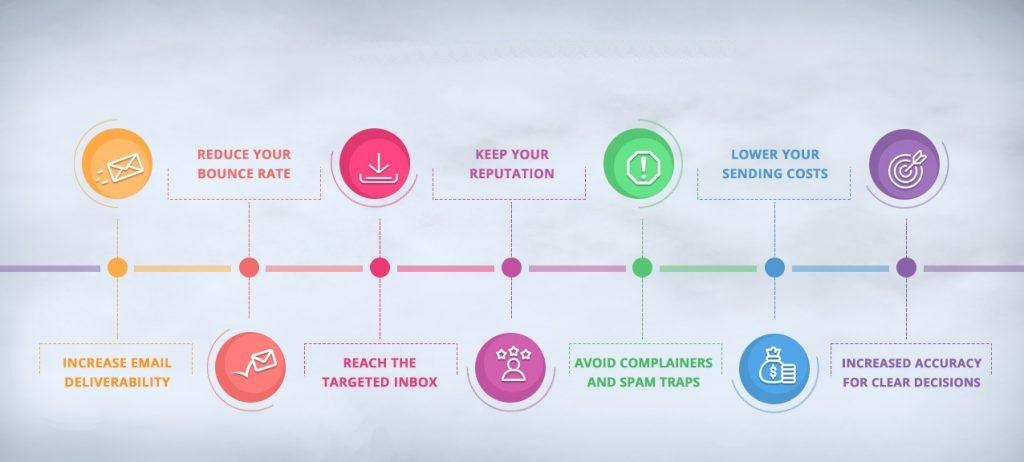
Creating a Culture of List Hygiene in Your Email Strategy
Maintaining a healthy email list is more than just a best practice; it’s a crucial component of a successful email marketing strategy. A culture of list hygiene can dramatically increase your deliverability rates, engagement, and ultimately your return on investment. By prioritizing list hygiene, you’re not only safeguarding your sender reputation but also enhancing the overall effectiveness of your campaigns.
To foster this culture, consider implementing the following strategies:
- Regularly Audit Your List: Conduct audits every few months to identify inactive subscribers. This helps you understand who is genuinely interested in your content and who might be dragging your metrics down.
- Engagement Tracking: Use engagement metrics to segment your list. Focus on subscribers who open, click, and interact with your emails to ensure you’re nurturing your most engaged audience.
- Double Opt-In Process: Encourage new subscribers to confirm their interest through a double opt-in process. This helps ensure that only those genuinely wanting to receive your emails make it onto your list.
- Streamlined Unsubscribe Process: Make it easy for users to opt-out. Instead of viewing unsubscribes as a failure, see them as an opportunity to refine your list and improve your targeting.
- Feedback Requests: Periodically ask for feedback from your subscribers about what they want to see in your emails. This not only helps you tailor your content but also engages your audience.
Consider utilizing a simple table to summarize your list cleaning efforts:
| Action Item | Frequency |
|---|---|
| List Audit | Every 3-6 Months |
| Engagement Review | Monthly |
| Feedback Surveys | Quarterly |
By integrating these practices into your routine, you cultivate a proactive mindset towards email list management. This not only enhances deliverability but also builds trust and credibility with your audience. Remember, an engaged list means higher open rates, click-throughs, and ultimately, conversions.
As you develop your culture of list hygiene, don’t overlook the importance of training your team. Educate them on the value of maintaining a clean list and encourage them to contribute ideas for improvement. A unified approach ensures that everyone is on the same page, working towards the common goal of a robust email marketing strategy.
Lastly, embrace technology. Utilize tools that help automate the cleaning process, such as AI-driven platforms that can analyze engagement patterns and suggest actions. The less manual work involved, the more time you have to focus on crafting compelling content that resonates with your audience.
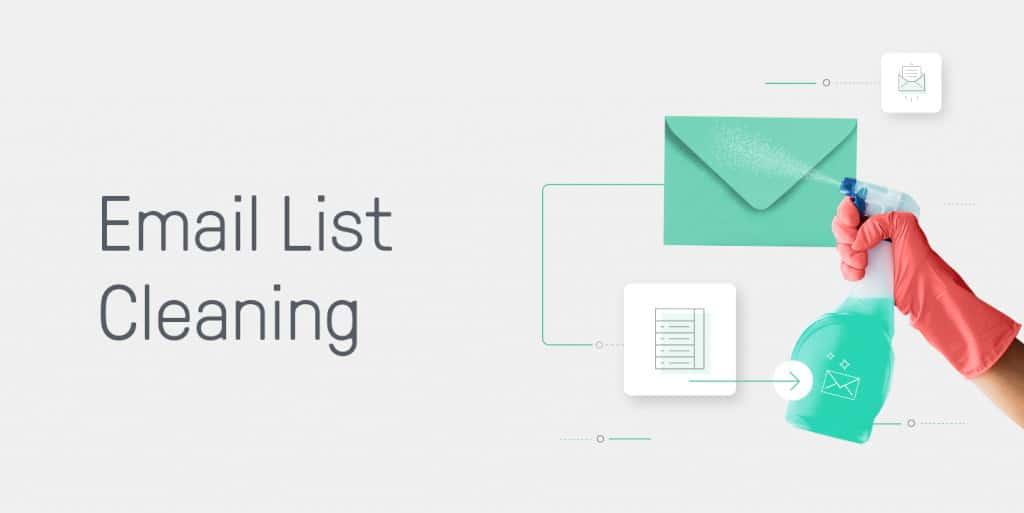
Conclusion: Elevate Your Email Marketing with a Pristine List
In the competitive landscape of digital marketing, a pristine email list can be your secret weapon. A clean list not only enhances your deliverability but also ensures that you are engaging with individuals who genuinely want to receive your content. This focused approach leads to improved open rates, better engagement, and ultimately, a higher return on investment.
By regularly cleaning your email list, you can:
- Reduce Bounce Rates: Eliminating invalid or inactive email addresses minimizes the likelihood of your emails bouncing back, which keeps your sender reputation intact.
- Enhance Engagement: By targeting an audience that is interested in your offerings, you can boost your click-through rates and foster stronger relationships with your subscribers.
- Increase Deliverability: Internet service providers (ISPs) favor senders with high engagement. A clean list helps ensure that your emails land in the inbox rather than the spam folder.
Moreover, maintaining a current list helps you understand your audience better. You can segment your subscribers based on their preferences and behaviors, allowing for personalized marketing campaigns that resonate more deeply. This level of customization not only elevates user experience but can also cultivate brand loyalty.
It’s also essential to implement a routine for list cleaning as part of your email marketing strategy. Consider the following steps:
- Establish a Schedule: Decide how often you will clean your list—monthly, quarterly, or even biannually. Regularity is key.
- Utilize Email Verification Tools: Invest in tools that automatically verify emails at the point of entry and periodically check existing addresses.
- Engage Dormant Subscribers: Before removing inactive contacts, consider sending re-engagement campaigns to see if you can revive their interest.
Ultimately, the cleanliness of your email list directly influences your overall marketing effectiveness. By prioritizing list hygiene, you set yourself up for success in reaching your goals. Let’s not forget that your audience is dynamic; their preferences change, and their engagement levels fluctuate. Staying proactive about list cleaning ensures that you’re always connecting with the right people.
committing to a pristine email list is more than just a best practice; it’s a strategic move that can lead to elevating your email marketing efforts. When you invest time and resources into maintaining a clean list, you position your brand for sustainable growth and enhanced communication. Make it a priority, and watch as your email marketing efforts flourish.
Frequently Asked Questions (FAQ)
Q&A: Email List Cleaning – Complete 5-Step Guide to Boost Deliverability
Q1: What is email list cleaning, and why is it important?
A1: Great question! Email list cleaning is the process of removing invalid, inactive, or unengaged subscribers from your email list. It’s crucial because a clean list improves your email deliverability, meaning your messages actually land in inboxes instead of spam folders. Plus, it enhances engagement rates, ensuring you’re connecting with people who genuinely want to hear from you.
Q2: What are the main steps in the email list cleaning process?
A2: So glad you asked! Here are the five essential steps:
- Identify Inactive Subscribers: Look for users who haven’t engaged with your emails in the past few months. These could be the folks dragging down your metrics.
- Segment Your List: Create segments based on engagement levels. This helps you target re-engagement campaigns effectively and ensures you don’t accidentally remove valuable contacts.
- Send Re-engagement Campaigns: Reach out to inactive subscribers with a campaign designed to rekindle their interest. You might be surprised at how many come back!
- Remove Hard Bounces: Hard bounces are emails that can’t be delivered. If an email address is invalid, it’s time to say goodbye and remove it from your list.
- Regular Maintenance: Set a routine for cleaning your list—monthly or quarterly. Consistency is key to maintaining high deliverability rates!
Q3: How often should I clean my email list?
A3: Ideally, you should clean your email list at least once a quarter. However, if you notice a dip in your open rates or engagement, it might be time for a cleaning sooner than that. The more frequently you maintain your list, the healthier it will remain!
Q4: Can cleaning my email list really boost deliverability?
A4: Absolutely! A clean email list means fewer bounces, lower unsubscribe rates, and higher engagement. All of these factors signal to email providers that you’re a trustworthy sender. This can lead to better inbox placement and improved deliverability rates over time.
Q5: What tools can I use to help with email list cleaning?
A5: There are several fantastic tools out there! Services like NeverBounce, ZeroBounce, and BriteVerify can help you identify invalid emails. For ongoing maintenance, many email marketing platforms like Mailchimp and Constant Contact offer built-in list cleaning features. Using these tools can save you time and ensure your list stays sharp!
Q6: What happens if I don’t clean my email list?
A6: Ignoring list cleaning can lead to several issues, such as poor deliverability, increased bounce rates, and a damaged sender reputation. Over time, this can significantly impact your marketing efforts and reduce your audience’s overall engagement. In short, a neglected list can cost you!
Q7: Any final tips for successful email list cleaning?
A7: Definitely! Always prioritize permission-based marketing—make sure your subscribers want to receive your emails. Also, keep an eye on your metrics; they can tell you a lot about how engaged your audience is. Lastly, make cleaning part of your regular email marketing strategy. You’ll not only see improved deliverability, but you’ll also create a more responsive and engaged audience!
Q8: Ready to get started with email list cleaning?
A8: Absolutely! If you’re looking to boost your email marketing success, start cleaning your list today. Remember, a well-maintained list is the heart of effective email marketing. Let’s get to work and watch your deliverability soar!
The Conclusion
As we wrap up our comprehensive guide to email list cleaning, it’s clear that maintaining a healthy email list is more than just a best practice—it’s a necessity for boosting your deliverability and ultimately driving your business forward. By following the five steps we outlined, you not only enhance your chances of landing in your subscribers’ inboxes but also foster a more engaged audience that genuinely wants to hear from you.
Remember, a clean email list means better engagement, improved sender reputation, and, most importantly, a greater return on your email marketing efforts. So, why wait? Start implementing these steps today and watch your email performance soar!
If you found this guide helpful, don’t hesitate to share it with your fellow marketers or anyone looking to improve their email strategy. Together, let’s make our inboxes a better place—one clean list at a time! Happy emailing!




